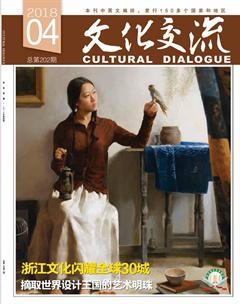陈香梅女士的“世纪之梦”
王文洪
陈香梅(Anna Chan Chennault,1925年6月23日~ ),世界著名华人华侨领袖、社会活动家、美国国际合作委员会主席。
陈香梅女士一生充满传奇色彩,她是美国抗战英雄、飞虎队司令陈纳德将军的遗孀。数十年来,陈香梅女士在中美关系、海峡两岸关系中扮演过重要角色。上世纪90年代,上海要建设国际经济、贸易、金融中心,规划选择双衢山(大衢山及附近小岛的总称)作为深水大港,并建设沪、舟、甬跨海大桥。远在美国的陈香梅女士闻讯后,明确表示支持这个造福子孙后代的善事,多次出席东方大港大桥工程高层次研讨会,并亲临岱山参加双衢山港口开发有限公司的揭牌典礼。

东方大港大桥工程的宏伟构想
1992年春天,邓小平发表南巡讲话,中国改革开放进入了新的历史阶段。国家决定把上海建成国际经济、贸易、金融中心,以浦东开发为龙头,带动长江流域的经济发展。
上海港口专家瞿世民认为,上海只有成为航运中心,才能真正成为贸易中心;只有成为贸易中心,才能真正成为金融中心;上海邻近地区必须建设国际深水大港,才能使上海成为世界经济中心。
上海能源化工总公司董事长胡华梁接受了这项创见,在其近万字的《论国际航运中心》一文中指出:上海深水港如不解決,三个中心和一个龙头的地位最终难以确定。上海建造深水港要具备哪些条件呢?胡华梁认为:距上海不能太远,临近环球航线,有抗风浪的地形,有足够的淡水资源,足够深的通海航道,足够长的泊位岸线,足够大的陆域腹地。在“移港就船”的指导思想下,他接着提出了大衢山、小衢山、黄泽山附近海域最为理想,许多符合深水大港的优点非常巧合地汇聚在一起。
1994年11月,浙江省政府在普陀山举办了“开发舟山群岛、接轨长江流域”研讨会。会上,具有远见卓识的胡华梁系统地提出了在舟山群岛建连接上海与宁波的跨海大桥、在大衢山建国际深水大港的宏伟构想,受到与会代表的肯定和赞赏。为了深入进行此项工作,胡华梁会同有关人员来到大衢山等地进行实地考察,最后作出了令世人惊讶的重大决定:出资买断大衢山海岸线4万亩土地,作为前期开发投资。
按照胡华梁的设想:公司未来将在舟山建成一个大型的能源、精细化工基地,需要用水,就引发了造大桥的想法,加上大衢山建造深水港后,港桥一结合经济效益将是明显的。从中国的交通地图看,东方跨海大桥从上海芦潮港经舟山到宁波,海上路线82公里,总长191.3公里。大衢山区域可建25万吨码头十几个、10万吨的码头50个。一旦深水大港建成,东方大桥功能巨大,能从根本上改变港口装卸和集疏能力滞后状况,避免压船压港的现象。

太平洋彼岸的陈香梅女士听闻此事后,非常赞成和支持胡华梁的构想。她说,建造世界第一长桥——东方跨海大桥和远东第一深水大港——东方中心大港,这是“世纪之梦”。一个民族有梦、有理想、有奋斗目标,梦才会成真。
1995年3月,受上海能源化工总公司委托,交通部第三航务工程勘察设计院完成了双衢山国际深水大港的初步规划,铁道部第四勘测设计院完成了沪、舟、甬跨海大桥的预可行性研究报告。由多名中科院院士参加、11位专家组成的评审委员会,对此两项工程研究进行了认真评审。5月,上海能源化工总公司和浙江省对外经济交流协会,再次举行了“开发舟山地区研讨会”。胡华梁报告了已做好的双衢山大港大桥工程初步规划,及他们公司在舟山市实行的投资开发项目。
会后,有记者把东方跨海大桥、东方中心大港的设计方案,写信告诉给陈香梅女士。她知道后十分高兴,欣然题词:“光耀中华民族,造福社会人群。——祝愿上海能源化工总公司建造东方大桥早日成功。”
巨幅画作形象描绘“世纪之梦”
东方大港、东方大桥方案出台后,引起专家广泛关注。这毕竟是一项跨世纪的工程,投资预算超过1000亿人民币,不亚于长江三峡的总投资。工程可行性究竟如何,令胡华梁这位设计师牵肠挂肚,夜不能寐。他决定召开有国内一流专家参加的高层研讨会,进行深入论证。
为让高层研讨会开得新颖独特、富有生机,胡华梁又提出将东方大港、东方大桥蓝图描绘出来,并特邀中年著名画家张复兴挥毫作画。张复兴亲自到舟山群岛实地写生,精心构思了草图,胡华梁提出了许多建设性的意见,保证了巨画的创意成功。
经过张复兴的两个月创作,一幅长8米、宽2米,取名为《世纪之梦》的巨画问世了,画出了理想中的东方跨海大桥和国际中心大港,大气磅礴。画面上旭日东升,云蒸霞蔚,碧波万顷,海阔天空,沙鸥翔集,巨轮争流,长桥卧波。论证会召开那天,巨幅画作悬挂于会议中心,引起不小的轰动。
9月18日,上海能源化工总公司、上海市工业经济协会、浙江省对外经济交流协会在上海联合举办了“双衢山国际大港”和“沪、舟、甬跨海交通工程”两大项目的研讨会。陈香梅女士和美国航运委员会主席霍夫曼先生应邀专程从美国飞到上海,她亲自为《世纪之梦》巨画揭幕,会场上引起轰动,百余位专家都拥向巨画前赞不绝口。陈香梅女士即席演讲:“画画得很好。有人说21世纪是亚洲的世纪,我看是中国的世纪……”
1996年春,陈香梅女士在美国华盛顿水门公寓为画家张复兴的画集作序,序文中再次提及她的这次上海之行:“张复兴先生是我在大陆认识的有才华的中年画家之一,那次在上海能源化工总公司关于东方大港大桥高层研讨会上,我为他所作的巨幅画作《世纪之梦》揭幕,这幅巨作笔力遒劲、气势澎湃,形象地描绘了上海经舟山到宁波建造跨海大桥的宏伟构想。”
陈香梅不远万里来舟山参加盛典
1996年6月,陈香梅女士和美国国务院顾问、中美航空公司总裁赫福满先生,应上海能源化工总公司兼浙江省岱山双衢山港口开发有限公司董事长胡华梁先生之邀,专程从美国赶来,参加双衢山港口开发有限公司的揭牌庆典仪式。她不远万里而来,于8日上午到达岱山岛。
来舟山的途中,因风急浪高,船在海上航行有些颠簸,同行的一些人变得无精打采起来,可陈香梅女士仍是很精神、很健谈。有随行的上海记者好奇地问:“在中国,绝大多数妇女55岁退休后就在家休养生息,而您在古稀之年仍是精力充沛,到处奔波,致力于那些很有意义的工作,这样做是基于怎样的想法?”
她笑着说:“我每天做自己喜欢的事,工作令我感到非常愉快,所以我从来不会想到自己已是70多岁的老人了。我热心于促进中美合作与交流,沟通海峡两岸关系。中美合作的潜力很大,我应该做些有意义的工作。”作为一位成功的女性,她还即兴创作了一段“格言”:“一个人不要老是去想明天干什么,不要回忆过去的事,最好还是干好今天的事。”
第二天上午,风和日丽,装饰一新的岱山县岱丝大厦彩旗招展,鼓乐齐鸣。岱山县人民政府在这里隆重召开“双衢山港口开发有限公司揭牌仪式”。上午9时,在阵阵乐曲声中,陈香梅女士在市、县领导陪同下健步走进会场,岱山万人空巷,争睹陈香梅女士的风采。她说:“我来这里表明我支持这一宏伟构想。”
陈香梅女士为双衢山港口开发有限公司揭牌后,便发表演讲。她说:“我希望能在有生之年看到大港、大桥项目顺利实施,为解决中国深水港问题、确立上海国际航运中心地位迈出有力的一步。”
揭牌典礼结束后,陈香梅女士為岱山亲笔题词:“建东方港桥,圆世纪之梦”。下午,陈香梅女士等嘉宾参观岱山岛。舟山的记者请她谈谈对舟山的印象,她说,舟山也是“东方之珠”,这么多岛能够发展,我觉得是很有前途的。她衷心祝愿海岛人民生活幸福,经济发展,事业成功。
大港大桥之梦正变成现实
舟山群岛的东方“大港、大桥”规划方案经过高层研讨会多次研讨,得到陈香梅女士及国内外港航界专家、海外财团的热烈响应,引起国家有关领导的高度重视。1997年,国家科委把这项工程的研究作为重大的软科学课题,委托上海能源化工总公司承担,并在同年8月由科委组织的评审会上通过。
关于东方大港。14年后的2011年6月30日,国务院正式批准设立浙江舟山群岛新区,舟山群岛的开发开放上升为国家战略。2017年4月1日,中国(浙江)自由贸易试验区挂牌,舟山正式进入自贸区时代。根据《中国(浙江)自由贸易试验区总体方案》,黄泽山岛、双子山岛、衢山岛、小衢山岛(即双衢山海域)是舟山自贸区离岛片区的中心,重点建设国际油品储运贸易基地,成为国际油港。
关于东方大桥。2005年5月,连接上海芦潮港和舟山小洋山岛、全长32.5公里的东海大桥通车。2009年12月,连接宁波镇海和舟山本岛、全长48.16公里的五座跨海大桥通车。2017年1月,东方大通道(即东方大桥)的先导工程——宁波舟山港主通道(鱼山石化疏港公路)项目正式开工建设,主线全长约27.96公里,5年完成。
(本文照片由作者提供)
Anna Chennault (born June 23, 1925), also known as Anna Chan Chennault, is a prominent Asian-American politician of the Republican Party, a popular figure for the China Lobby, and an eminent social activist. She is the widow of World War II leader Lieutenant General Claire Lee Chennault, commander of American air operations in China and leader of the “Flying Tigers”. She played an important role in Sino-American relation and cross-strait communication. In 1955, the Dallas News in an editorial called Chennault someone whose “opinions were worth listening to” and “a personage in her own right, by inheritance and achievement, as well as by marriage”. Anna Chennault was also a driving force behind the rise of the Shuangqushan deepwater port located in Zhoushan Archipelago in Zhejiang in the 1990s.

The ‘Southern Tour Speeches by Chinese statesman Deng Xiaoping (1904-1997) in 1992 opened a brand-new chapter of the reform and modernization in China, and put the development of the Pudong area in Shanghai officially on the government agenda. “Shanghai will never be a hub for international trade and finance until it becomes a shipping center, and it will not be a world-class economic center in the real sense of the words until its peripheral areas are developed into a deepwater port meeting international standards,” Qu Shiming, a port expert based in Shanghai, pointed out.
The experts viewpoint was echoed by Hu Hualiang, President of Shanghai Energy Chemical Corporation, who further pointed out that the sea areas near Daqushan, Xiaoqushan and Huangzeshan were ideal for the development of a deepwater port.
At a seminar held in Putuoshan in November of 1994, Hu Hualiangs proposal of building sea-spanning bridges in the Zhoushan Archipelago to connect Shanghai and Ningbo and developing the Daqushan area into a deepwater port won unanimous approval from the participants.
The news soon reached the Washington-based Anna Chennault. “The idea of worlds longest bridge and the largest deepwater port in the Far East is exciting. It is a ‘century dream of a nation.”
The pre-feasibility study and design scheme of the two epoch-making projects took only six months to work out. The project that involved a total capital investment rivaling the Three Gorges Dam brought Hu Hualiang a lot of sleepless nights as well as enormous pride. To make the design scheme more tangible, he invited famous artist Zhang Fuxing to join the team. Two months later, an eight-meter-long scroll painting released by the artist caused a sensation at a seminar held in Shanghai.
、
On September 18, 1995, Anna Chennault and Chair of the United States Maritime Commission landed in Shanghai. At the opening ceremony, she unveiled the scroll and made a speech. “They say the 21st century is the century of Asia. Id say it is the century of China.”
In June of 1996, Anna Chennault arrived in Daishan, the largest island of Zhoushan Archipelago, to take part in the opening ceremony of the Shuangqushan Port Development Corporation. Many people traveling with her became travel-weary and were seasick for much of the trip, but Anna was in high spirits. “I do what I love to do every day, and work makes me happy. I am never bothered by my age. I want to contribute what I can to the communication between China and America. It makes little sense to think about what to do tomorrow or look back on the good old days. It is what you do today that counts.”
“I am here today to show my support for the great project,” she announced at the opening ceremony. “I hope I can live to see the bridges and the port take shape. The project will be a defining step taken towards the rise of Shanghai as an international shipping center.”
The 32.5-km East China Sea Bridge connecting Luchao in Shanghai and Xiaoyangshan Island in Zhoushan opened to traffic in 2005. The winter of 2009 saw the opening of the five sea-spanning bridges connecting Zhenhai in Ningbo and the proper of Zhoushan archipelago. Construction of the 27.96-km Yushan Highway, the first part of the ‘Bridge of the Orient, began in January of 2017, and will be completed in five years.

